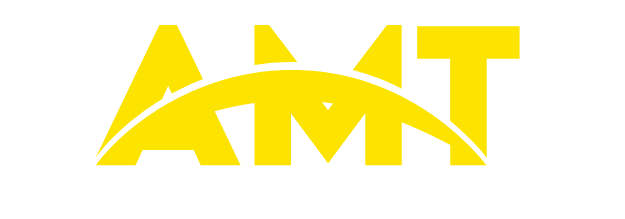Cotton Rags Manufacturer: Crafting Sustainable Solutions for a Cleaner Future
In today’s fast-paced world, where sustainability is gaining paramount importance, the demand for eco-friendly products has surged. One such product making a significant impact is cotton rags. These versatile pieces of cloth, often overlooked, play a crucial role in various industries, from cleaning to automotive. In this article, we delve into the world of cotton rags manufacturing, exploring the process, applications, advantages, and how to choose a reliable cotton rags manufacturer.
What are Cotton rags?
Cotton rags are pieces of cloth derived from recycled or new cotton materials. Known for their absorbent and durable nature, these rags find applications in diverse industries.
Industries across the board rely on cotton rags for tasks ranging from cleaning machinery to applying finishes. The versatility and effectiveness of cotton rags make them indispensable.

The Manufacturing Process
Let’s delve into the intricate process of manufacturing cotton rags.
1. Sourcing Raw Cotton
The journey begins with the careful selection of raw cotton, a crucial step in determining the quality of the final product. Manufacturers meticulously choose the type of cotton, considering factors such as fiber length, strength, and color. This careful selection sets the foundation for producing high-quality cotton rags.
2. Cleaning and Sorting
Once the raw cotton is sourced, it undergoes a thorough cleaning process to remove impurities. This step is vital to ensure that the final product is free from foreign particles and maintains a high level of purity. The cleaned cotton is then sorted based on various criteria, including fiber length and thickness, preparing it for the next stages of production.
3. Cutting and Shredding
Precision is key in crafting cotton rags with specific sizes and characteristics. The sorted cotton is then cut and shredded according to the desired specifications. This step involves using advanced machinery to achieve uniformity in size and texture. The cutting and shredding process is essential to meet the diverse needs of end-users, ranging from industrial cleaning to artistic applications.
4. Quality Control Measures
Maintaining stringent quality control measures is a non-negotiable aspect of cotton rags manufacturing. At every stage of the process, quality checks are implemented to ensure that the final product meets or exceeds industry standards. This includes monitoring factors such as absorbency, durability, and overall quality. By adhering to strict quality control, manufacturers guarantee a reliable and consistent supply of high-quality cotton rags.
The meticulous combination of these manufacturing steps results in the creation of cotton rags that are not only versatile but also environmentally friendly. The sourcing of raw materials, cleaning processes, precision cutting, and quality control measures collectively contribute to producing a product that caters to the diverse needs of industries while minimizing its impact on the environment.
Applications of Cotton Rags
Cotton rags, often underestimated in their versatility, find extensive applications across various industries due to their unique properties. Let’s explore the diverse ways in which cotton rags prove indispensable:
1. Industrial Cleaning
In the realm of industrial settings, cleanliness is paramount. Cotton rags shine as an ideal choice for industrial cleaning tasks. Their absorbent nature and durability make them effective for wiping down machinery, surfaces, and tools. Unlike disposable alternatives, cotton rags can be reused, offering a sustainable solution for maintaining a clean working environment.
2. Automotive Industry
The automotive sector relies on cotton rags for tasks that demand precision and a lint-free finish. Whether it’s polishing surfaces, applying finishes, or cleaning delicate components, cotton rags provide the necessary finesse. Their ability to leave no residue behind makes them a preferred choice in the automotive detailing process.
3. Painting and Printing
Artists and printers appreciate the smooth texture and absorbency of cotton rags. When it comes to applying paints, inks, or other artistic mediums, cotton rags offer a controlled and even application. Their versatility extends to various art forms, contributing to the creation of high-quality prints and paintings.
4. Absorbent Products
The absorbent nature of cotton rags makes them valuable in the creation of absorbent products. From oil absorbent pads to spill kits, cotton rags play a crucial role in managing and containing spills. Their ability to absorb liquids efficiently makes them a go-to choice in situations where quick and effective absorption is necessary.
These applications merely scratch the surface of the diverse roles that cotton rags play in different industries. As businesses increasingly prioritize sustainability and effectiveness, the demand for cotton rags continues to grow. In the following sections, we’ll delve into the specific advantages that make cotton rags a standout choice, including their eco-friendly nature, durability, and cost-effectiveness.
Advantages of Cotton Rags
Cotton rags, with their humble origins, offer a range of advantages that make them stand out in the market. These advantages contribute to their widespread use across industries. Let’s explore the key benefits:
1. Eco-Friendly Nature
One of the primary advantages of cotton rags lies in their eco-friendly characteristics. Unlike disposable alternatives, cotton rags are reusable, reducing the overall environmental impact. Businesses that prioritize sustainability find that incorporating cotton rags into their operations aligns with their commitment to reducing waste and promoting a circular economy.
2. Durability and Reusability
The durability of cotton rags sets them apart from many other cleaning and wiping options. Their sturdy nature allows for repeated use, providing businesses with a long-lasting solution. This durability not only contributes to cost-effectiveness but also minimizes the need for frequent replacements, reducing the overall environmental footprint.
3. Cost-Effectiveness
While the initial cost of cotton rags might be slightly higher than disposable alternatives, their long-term cost-effectiveness is a compelling factor. The ability to reuse cotton rags multiple times results in significant savings over time. Businesses that prioritize budget-conscious decisions find that investing in cotton rags pays off in the form of reduced expenses related to cleaning and maintenance.
Incorporating cotton rags into daily operations goes beyond mere practicality; it becomes a strategic decision that aligns with both environmental and financial goals. In the next section, we’ll delve into the considerations businesses should keep in mind when selecting a reliable cotton rags manufacturer, ensuring that they harness these advantages to the fullest extent.
Choosing a Reliable Cotton Rags Manufacturer
Selecting the right cotton rags manufacturer is pivotal to ensuring the quality and reliability of the end product. Here are key considerations to guide your choice:
1. Reputation and Experience
Opt for a manufacturer with a solid reputation and extensive experience in the industry. Established manufacturers often have a proven track record of delivering high-quality cotton rags, backed by years of expertise.
2. Quality Standards
Look for a manufacturer that adheres to stringent quality standards. Ensure they follow industry norms and regulations, guaranteeing that the cotton rags meet or exceed the expected quality benchmarks.
3. Customization Options
Every business has unique requirements. Choose a cotton rags manufacturer that offers customization options, allowing you to tailor the cotton rags to your specific needs. Whether it’s size, thickness, or color, the ability to customize ensures a seamless fit for your operations.
4. Pricing and Delivery
Consider the overall cost, including pricing and delivery. Evaluate whether the manufacturer’s pricing aligns with your budget while ensuring timely delivery of the products. A transparent pricing structure and reliable delivery timelines are indicative of a trustworthy manufacturer.
By carefully considering these factors, you can confidently choose a cotton rags manufacturer that not only meets but exceeds your expectations. In the following sections, we’ll delve into the sustainability aspect of cotton rag manufacturing and explore real-world case studies to provide a comprehensive understanding of their applications and benefits.
Sustainability in Cotton Rags Manufacturing
In an era where environmental consciousness is paramount, the sustainability of manufacturing processes holds significant importance. Cotton rags, as eco-friendly products, often boast sustainability features. Here’s how sustainability is integrated into the manufacturing of cotton rags:
Recycling Initiatives
Forward-thinking cotton rags manufacturers actively engage in recycling initiatives. By utilizing recycled cotton or implementing recycling programs within their operations, these manufacturers contribute to a circular economy. This reduces the overall environmental impact of cotton rags production and promotes the efficient use of resources.
Environmental Impact
Understanding the environmental impact of manufacturing is crucial. Sustainable cotton rags manufacturers prioritize environmentally friendly practices throughout the production process. This includes minimizing water usage, reducing energy consumption, and ensuring responsible waste management. By adopting these practices, manufacturers mitigate their ecological footprint.
Sustainability in cotton rags manufacturing goes beyond the end product; it involves a commitment to ethical and eco-friendly practices at every stage. Businesses looking to make environmentally conscious choices can align themselves with manufacturers who prioritize sustainability.
In the upcoming sections, we’ll delve into real-world case studies, exploring success stories of businesses leveraging cotton rags to enhance their operations. These examples will provide insights into the practical applications and benefits of incorporating cotton rags into various industries.
Case Studies
A. Success Stories of Businesses Using Cotton Rags
1. Industrial Cleaning Revolution: SHARJAH CARBON FACTORY L.L.C.
Challenge: SHARJAH CARBON FACTORY L.L.C. faced challenges with maintaining a clean and efficient production floor. Disposable wipes were proving costly and environmentally unfriendly.
Solution: Switching to cotton rags provided a sustainable solution. The absorbent and durable nature of cotton rags allowed for effective industrial cleaning. The company reported a significant reduction in cleaning expenses and a positive impact on its environmental initiatives.
2. Automotive Detailing Excellence: German Auto Care AE
Challenge: German Auto Care AE sought a lint-free solution for automotive detailing. Traditional wiping materials left residue, affecting the quality of their finishes.
Solution: Transitioning to cotton rags transformed their detailing process. The lint-free quality of cotton rags ensured a flawless finish. German Auto Care AE reported improved customer satisfaction and a reduction in rework, enhancing overall operational efficiency.
B. Real-world Applications and Benefits
1. Artistic Precision: Artistry Studios
Application: Artistry Studios, a renowned art studio, incorporated cotton rags into their painting process.
Benefits: The smooth texture of cotton rags allowed artists to achieve precise brush strokes and blending. The absorbency of the rags contributed to vibrant and long-lasting artwork. Artistry Studios witnessed an increase in the quality of their creations, attracting art enthusiasts and collectors.
2. Spill Management Innovation: Eco Solutions Corp.
Application: Eco Solutions Corp. implemented cotton rags in the creation of spill kits for industrial facilities.
Benefits: The absorbent nature of cotton rags proved invaluable in managing spills effectively. The company’s spill kits became a preferred choice for businesses aiming to enhance workplace safety and environmental responsibility.
These case studies showcase how businesses across diverse industries have successfully integrated cotton rags into their operations, realizing tangible benefits in terms of cost savings, operational efficiency, and environmental impact.
In the next sections, we’ll explore practical tips for proper handling and disposal of cotton rags, ensuring safety and environmental responsibility in their use.
Tips for Proper Handling and Disposal
Ensuring the proper handling and disposal of cotton rags is crucial for maintaining a safe and environmentally friendly workplace. Here are essential tips to guide businesses in this regard:
Safety Precautions
- Avoid Flammable Substances: Keep cotton rags away from flammable materials or substances to prevent the risk of fire. Store them in designated areas with proper ventilation.
- Use Protective Gear: When handling chemicals or substances that may pose health risks, use appropriate protective gear, such as gloves and safety goggles.
- Regular Inspections: Periodically inspect cotton rags for wear and tear. Replace damaged or overly soiled rags promptly to maintain their effectiveness and prevent safety hazards.
Environmentally Friendly Disposal Methods
- Recycling Programs: Participate in recycling programs offered by local waste management facilities. Many cotton rags are recyclable, contributing to sustainability efforts.
- Composting: If the cotton rags are made from natural fibers, consider composting them. Ensure they are free from chemicals or contaminants that may hinder the composting process.
- Proper Storage of Contaminated Rags: If cotton rags have been used with hazardous materials, store them in designated containers. Dispose of contaminated rags following local regulations and guidelines.
- Consult Local Regulations: Familiarize yourself with local regulations regarding the disposal of industrial materials. Compliance with these regulations ensures responsible waste management practices.
By implementing these tips, businesses can not only ensure a safe working environment but also contribute to sustainable waste management practices. The eco-friendly nature of cotton rags extends beyond their use, making proper handling and disposal an integral part of their overall environmental impact.
In the following sections, we’ll explore future trends in cotton rags manufacturing, including technological innovations and emerging opportunities in the market. Stay tuned for insights into the evolving landscape of this sustainable industry.
Future Trends in Cotton Rags Manufacturing
As industries evolve and technology advances, the manufacturing of cotton rags is also subject to innovation. Here are key trends shaping the future of cotton rags production:
Technological Innovations
- Advanced Cutting and Shredding Techniques: Expect to see advancements in cutting and shredding technologies, enhancing the efficiency of the manufacturing process. This could result in more precise and uniform cotton rag products.
- Automation in Sorting Processes: Automation is likely to play a significant role in the sorting of raw materials, optimizing the production line. Automated sorting systems can improve accuracy and speed, leading to higher-quality cotton rags.
Market Growth and Emerging Opportunities
- Increased Demand for Sustainable Products: The global emphasis on sustainability is expected to drive an increased demand for eco-friendly products, including cotton rags. Manufacturers aligning with sustainable practices are likely to experience continued growth.
- Customization for Niche Industries: With the rise of niche industries, the demand for specialized cotton rags tailored to specific applications will grow. Manufacturers offering customization options will have a competitive edge.
- Integration of IoT in Quality Control: The Internet of Things (IoT) is anticipated to play a role in quality control processes. IoT sensors can monitor various parameters during production, ensuring consistency and adherence to quality standards.
- Expansion of Recycling Initiatives: Manufacturers embracing circular economy principles will likely expand their recycling initiatives. This could involve incorporating a higher percentage of recycled materials in cotton rag production, further reducing environmental impact.
Stay attuned to these trends to remain on the cutting edge of the cotton rags industry. As businesses increasingly prioritize sustainability and innovation, the evolution of manufacturing processes will pave the way for more efficient, eco-friendly, and tailored cotton rag solutions.
FAQs
Are cotton rags more cost-effective than disposable alternatives?
Yes, in the long run, the durability and reusability of cotton rags make them a cost-effective choice.
How can businesses ensure proper disposal of cotton rags?
Businesses can adopt environmentally friendly disposal methods, such as recycling or composting.
What sets a reputable cotton rags manufacturer apart from others?
A reputable cotton rags manufacturer has a proven track record, adheres to quality standards, and offers customization options.
Can cotton rags be used in medical or food-related industries?
While cotton rags are versatile, it’s crucial to ensure that they meet the specific hygiene standards required for such industries.
What are the latest technological innovations in cotton rags manufacturing?
Stay updated on the latest technologies, such as advanced cutting and shredding techniques, enhancing the efficiency of cotton rags production.
Conclusion
As we navigate towards a more sustainable future, the role of cotton rags in various industries cannot be overstated. From their eco-friendly nature to versatility in applications, cotton rags offer a viable solution for businesses seeking responsible choices. Choosing a reliable cotton rags manufacturer ensures that your business contributes to a cleaner, greener future.







